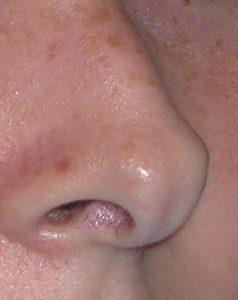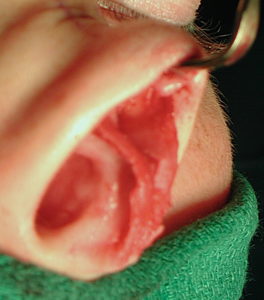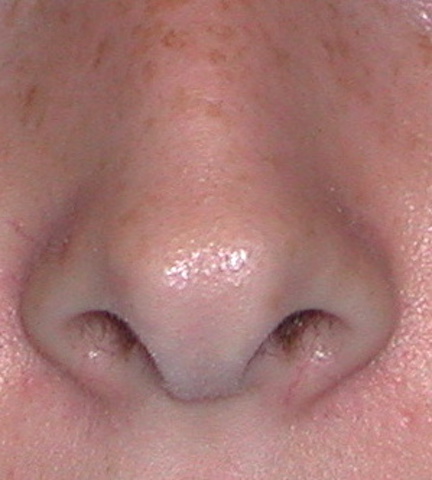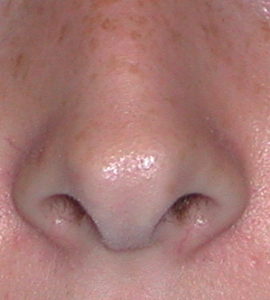The shape of the nose varies greatly amongst people and its uniqueness is very much like a fingerprint for the face. No two noses are ever exactly alike. (unless one is a twin) But there are distinct types of shapes, particularly at the tip of the nose, which can be classified by their underling cartilaginous anatomy. The tip has the greatest amount of variability of the nose due to the confluence of the lower alar cartilages and the septum at the central tip region.


But in the bifid nasal tip, the alar cartilages are further apart and/or have very flared caudal edges which allows the overlying skin to fall down in between their edges. The degree of alar cartilage separation or flare, and how much it extends along their vertical length determines how visible the tip bifidity is.
The treatment of the bifid nasal tip tis to either sew the caudal edges of the dome and infra tip areas together or to place a columellar strut cartilage graft between the split cartilages and see across it. (essentially filling in the midline defect. Which approach is best depends on what else is being done in the rhinoplasty procedure. Since many bifid tips are just one component of a rhinoplasty procedure the columellar strut is often used for its tip support benefits.
Dr. Barry Eppley
Indianapolis, Indiana




